Out of the three new shows at National Taiwan Museum, I was initially more interested in the seed exhibition due to my recent interest in gardening. But while “Seeds: A Story of Eras” is playful, informative and visually pleasing, I felt that the content was too general and did not offer much information specifically related to Taiwan and its agricultural development.
Instead, I spent the most time on the opposite wing of the museum’s first floor at the “Treasures of Taiwanese” hand-puppet exhibit, which opened on Tuesday last week with selections from the roughly 2,800 artifacts donated in 2019 by the Seden Society Puppet Theater Foundation (西田社布袋戲基金會).
Both shows will run through next month, and those who haven’t seen the excellent Exploring Taiwan (博物台灣) on the second floor, which opened in February, should definitely check it out.
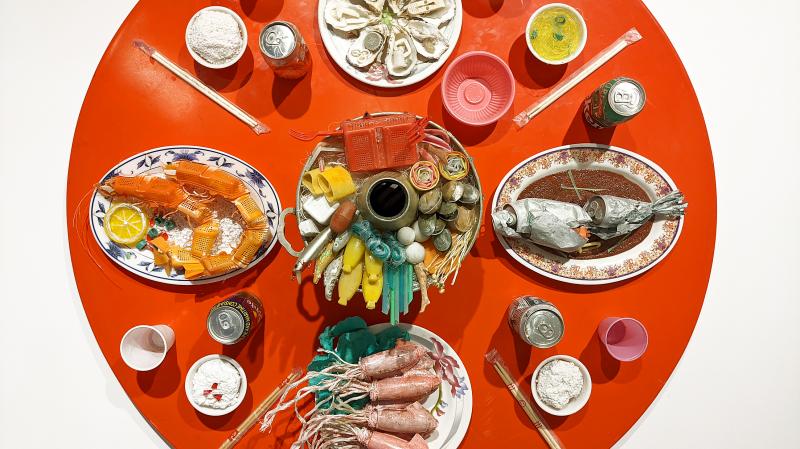
Photo: Han Cheung, Taipei TImes
I also swung by “Sustainable New Year’s Dinner Tables” (永續年夜飯) at the museum’s Nanmen Branch, which opened yesterday. The museum has been holding an educational workshop of the same name since 2016, and the show is an information-heavy yet sobering look at the way people eat in Taiwan and how it can be improved for the sake of our planet.
SEED BABIES
The seed show takes on a lively, light-hearted tone from the get go, anthropomorphizing the seeds as babies in a way that appeals to younger audiences but isn’t overly saccharine for adults. Take a grain of rice, for example — the germ is the “baby,” while the endosperm is nature’s “bento box” that nourishes the baby.
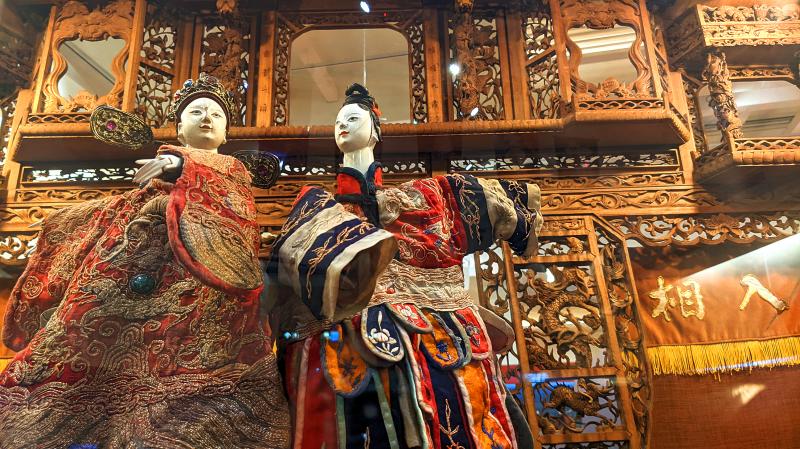
Photo: Han Cheung, Taipei TImes
Some of the text is quite humorous. In one display discussing seed sizes, a coconut tells a handful of sesame seeds, “Obviously, traveling to Hawaii is too hard for you, Hobbit,” to which the seeds reply, “At least we have more chances than you, Hulk.”
Despite the comic relief, it’s actually a very comprehensive overview of how seeds are used across the world by humans as well as the myriad ways they disseminate, or “hit the road” to avoid competing for resources with its parents.
At the end, the curators offer an apology: “Since we did not ask the permission of the parent plants to have so many of their seeds take part in this exhibition, we acknowledge that we have committed a mass kidnapping ... We would like to express our sincere apologies to the countless botanical beings who continue to tolerate the immorality of humans.”
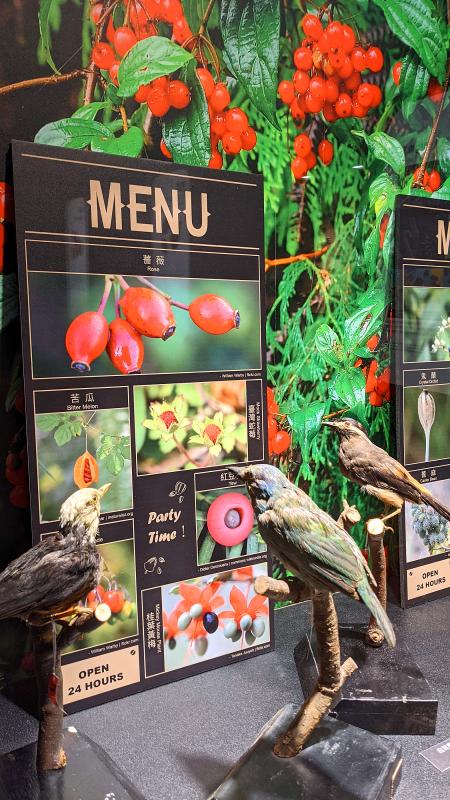
Photo: Han Cheung, Taipei TImes
With that, the final display is about sustainability and preserving seed diversity. But again, more could have been discussed here, specifically about Taiwan’s efforts, innovations and problems. This exhibit is definitely worth a look, but probably in conjunction with the other shows in the building.
TRADITIONAL ENTERTAINMENT
The puppet exhibit also concludes with sustainability and preservation, which is an imminent issue along with Taiwan’s other traditional arts. The discussion is quite thought-provoking here, exploring the differences between craftspeople restoring puppets to prolong their lives in a troupe and the museum’s mission of preserving them authentically while keeping their flaws and traces of repair.
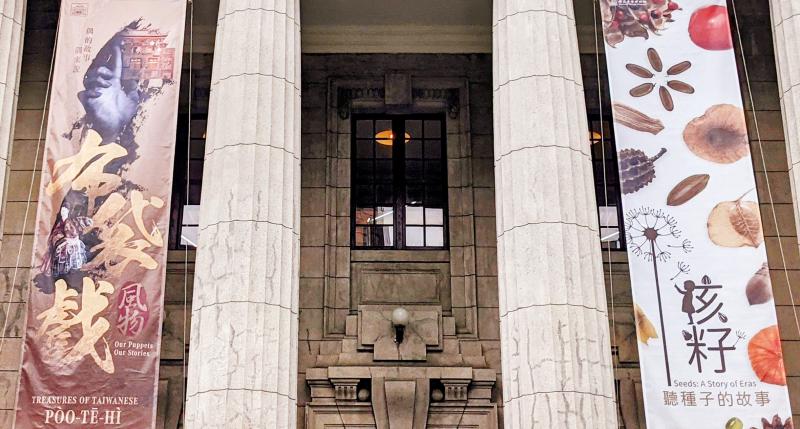
Photo: Han Cheung, Taipei TImes
A whole room is devoted to the issue, providing a fascinating behind-the-scenes look into how the museum processes these artifacts, which were previously stored in conditions “detrimental to the puppets’ preservation” and required immediate first aid.
The rest of the exhibit is a detailed, systematic breakdown of all the knowledge and work that goes into a hand puppet performance, from stage arrangement to puppeteer training to the general categories of characters and their costumes. One can see the evolution of Taiwan’s puppet styles through history, starting from traditional Chinese figurines and morphing into Japanese samurais, anti-Communist soldiers and slick modern Pili (霹靂) heroes.
Highlights include what is believed to be Taiwan’s oldest known puppet theater stage “Kim-tsuan-tong” (金泉同), which belonged to Chinese puppet master Tung Chuan (童全). Like many of his contemporaries, Tung came to Taiwan alone at the age of 20 in 1873 and made a name for himself with his “powerful voice and animated performances.”
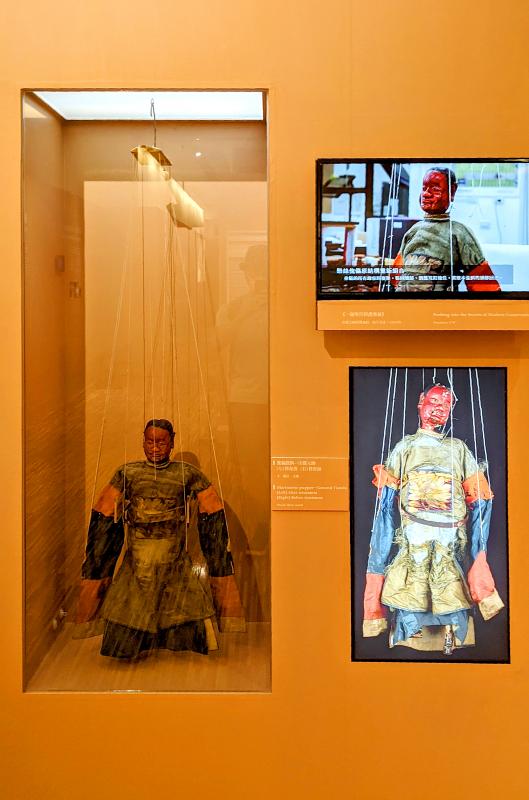
Photo: Han Cheung, Taipei TImes
A larger stage is positioned so that the viewers can clearly see what goes on in front and in the back, with diagrams explaining the typical setup. Also worth seeing is a step-by-step display of how the puppet heads, hands and feet are carved and colored from blocks of wood.
Part of what made the permanent exhibitions upstairs so memorable were the rich interactive features, but both the seed and puppet shows lack in this department. This may be due to COVID-19 concerns, as certain movable parts were disabled to reduce human contact.
The puppet show concludes with a personality test accessed via QR code that assigns you a puppet character based on your answers — I got Zhuge Liang (諸葛亮), one of ancient China’s most brilliant military strategists.
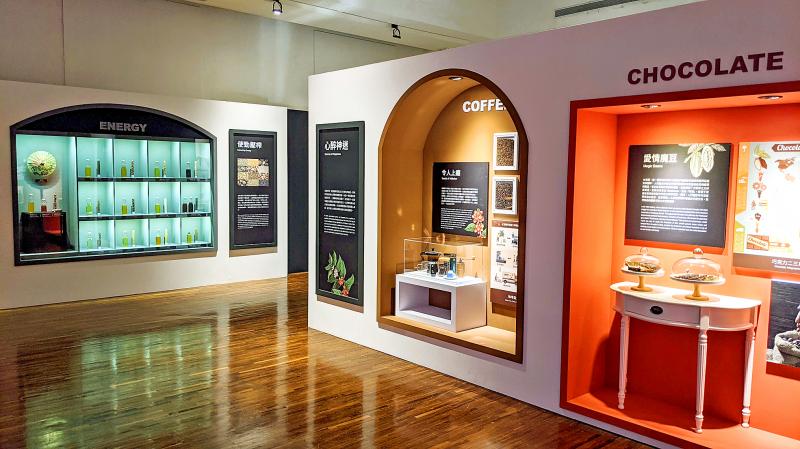
Photo: Han Cheung, Taipei TImes
ECO-FRIENDLY EATING
The sustainable New Year’s dinner table show opens with a colorful, cheerful montage of what different ethnic groups in Taiwan eat for their new year’s feasts, but quickly jumps into the changes in Taiwanese culinary habits such as the drastically increased consumption of meat, overfishing and excessive food waste.
In contrast to the warm opening scene, a round table meal made of marine waste hangs inside on a wall to the soundtrack of Amis singer Anu Kaliting Sadipongan’s Aka pifalah ko lakaw (Don’t litter anymore). Fresh microplastic oysters, stir-fried plastic noodles and styrofoam rice are on the menu.
This show covers it all: carbon emissions, plastic in the ocean, the nation’s food self-sustainability and so on; it’s a lot to take in at once but it is something we often forget about in our daily lives. Fortunately, the final part provides suggestions on how we can all be more responsible eaters. A big focus is placed on Aboriginal traditions, which the curators state are more in harmony with the land and should be given more attention.
“The local ingredients and the traditional wisdom underlying indigenous cuisine has been long overlooked by mainstream society. However, its represents diverse approaches for tackling the sustainability challenges we face in today’s world,” a display states.
It’s not the most riveting exhibition, but the rich content does give the visitor quite a bit of food for thought. And for those interested in Taiwanese — especially indigenous — foodways, there’s quite a few interesting tidbits to take in and perhaps follow up on.

On April 26, The Lancet published a letter from two doctors at Taichung-based China Medical University Hospital (CMUH) warning that “Taiwan’s Health Care System is on the Brink of Collapse.” The authors said that “Years of policy inaction and mismanagement of resources have led to the National Health Insurance system operating under unsustainable conditions.” The pushback was immediate. Errors in the paper were quickly identified and publicized, to discredit the authors (the hospital apologized). CNA reported that CMUH said the letter described Taiwan in 2021 as having 62 nurses per 10,000 people, when the correct number was 78 nurses per 10,000

As we live longer, our risk of cognitive impairment is increasing. How can we delay the onset of symptoms? Do we have to give up every indulgence or can small changes make a difference? We asked neurologists for tips on how to keep our brains healthy for life. TAKE CARE OF YOUR HEALTH “All of the sensible things that apply to bodily health apply to brain health,” says Suzanne O’Sullivan, a consultant in neurology at the National Hospital for Neurology and Neurosurgery in London, and the author of The Age of Diagnosis. “When you’re 20, you can get away with absolute

May 5 to May 11 What started out as friction between Taiwanese students at Taichung First High School and a Japanese head cook escalated dramatically over the first two weeks of May 1927. It began on April 30 when the cook’s wife knew that lotus starch used in that night’s dinner had rat feces in it, but failed to inform staff until the meal was already prepared. The students believed that her silence was intentional, and filed a complaint. The school’s Japanese administrators sided with the cook’s family, dismissing the students as troublemakers and clamping down on their freedoms — with

As Donald Trump’s executive order in March led to the shuttering of Voice of America (VOA) — the global broadcaster whose roots date back to the fight against Nazi propaganda — he quickly attracted support from figures not used to aligning themselves with any US administration. Trump had ordered the US Agency for Global Media, the federal agency that funds VOA and other groups promoting independent journalism overseas, to be “eliminated to the maximum extent consistent with applicable law.” The decision suddenly halted programming in 49 languages to more than 425 million people. In Moscow, Margarita Simonyan, the hardline editor-in-chief of the